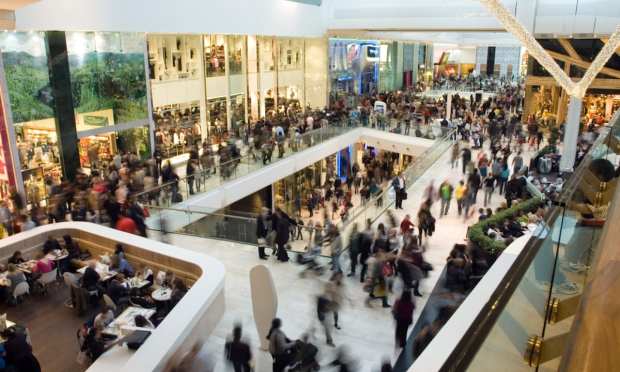Risky Business: Malls See Late Holiday Surge Despite Pandemic

With the holidays all over except for the returns, it’s time for the troubled mall sector to face the existential crisis that it avoided thanks to what looks like a decent season in terms of foot traffic, despite the pandemic. Local reports from Houston, Washington, DC and even the COVID hotspot of Los Angeles noted huge crowds at malls during the final week of the season, to the point where local health officials were concerned for consumers’ safety.
“If you’re still out there shopping for your loved ones for this holiday season … then you are missing the gravity of the situation that is affecting hospitals across L.A. County,” L.A. County Health Services Director Dr. Christina Ghaly told The Los Angeles Times. “Though they may seem benign, these actions are extremely high-risk.”
The behavior was indeed risky, and no insight about it was put forth by any analysts outside of consumers risking their health to buy last-minute gifts. According to The Times, the majority of outbreaks at shopping malls during the pandemic were reported in the past four weeks, according to an analysis of data posted on the county’s website. According to the paper: “At the Northridge Fashion Center, 12 J.C. Penney employees recently tested positive for the coronavirus, as did 10 at Kohl’s in the South Bay Galleria in Redondo Beach and 24 at the Best Buy in the West Hollywood Gateway retail center, which prompted a six-day closure of the store. New outbreaks have also been reported at Vans in the Burbank Town Center, Zara at the Glendale Galleria and Forever 21 at the Montebello Town Center.”
The holiday traffic surge has not yet been quantified on a national basis. Mastercard’s Spending Pulse holiday report shows that department stores, which anchor most malls, saw a 10 percent drop in sales compared to 2019. It’s probable that the holiday surge was limited to major markets and to malls that have already had success in the past. But there is a counter-trend that defies the prediction of malls being transformed to other uses or going out of business altogether.
For example, Charleston, West Virginia has started an online campaign to save the local Charleston Town Center Mall after it became clear that Talbots, Sephora, Chico’s and White House Black Market will close their doors throughout January. Earlier in 2020, Francesca’s, Hollister, Jos. A. Bank and the WVU Fan Store all shuttered their operations in the mall.
“Now, four more stores are closing this month. That set off an alarm to me. We need to do something right now,” said state Del. Jim Barach, D-Kanawha. “This is all about starting a virtual coalition to save our Town Center Mall.” Other members of the coalition expressed concern that losing the mall would create a ripple effect in the city’s downtown as well as its convention center.
The harsh reality is that malls are being repurposed. The recent National Association of Real Estate Editors (NAREE) conference was full of predictions about the short-term future of the sector. For example, Ellen Dunham-Jones, director of Georgia Tech’s Urban Design Program, who co-wrote a book documenting suburban redevelopment, said that 280 U.S. malls have been or are in the process of being retrofitted, and more than 100 other malls have announced plans to redevelop. Her research also shows that about 70 malls have been converted into “mixed-use town centers,” with offices, apartments and green space along with reduced retail.
An example of this redevelopment can be seen in the Research Triangle area of North Carolina. Epic Games, owner of Fortnite, announced on Monday (Jan. 4) that it bought the Cary Towne Center for $95 million to build its corporate headquarters on the site.
Jason Davis, managing director of site owner Turnbridge Equities, said in a report, “After years of shifting development plans for the Center, we are thrilled the space will be utilized to its full potential and turned into something the town and community of Cary can be proud of.”
